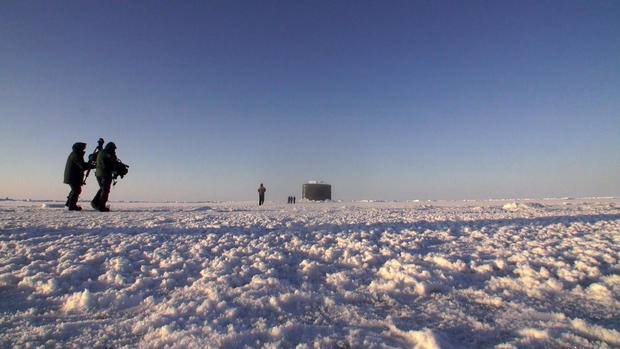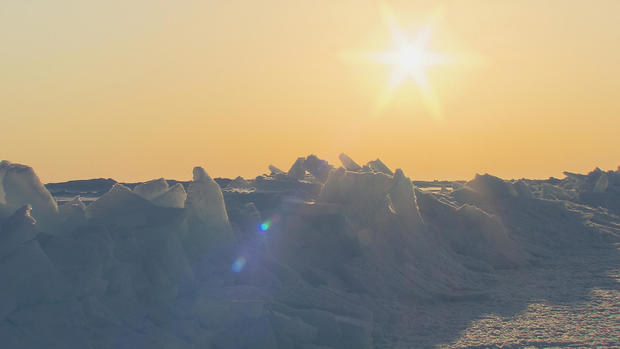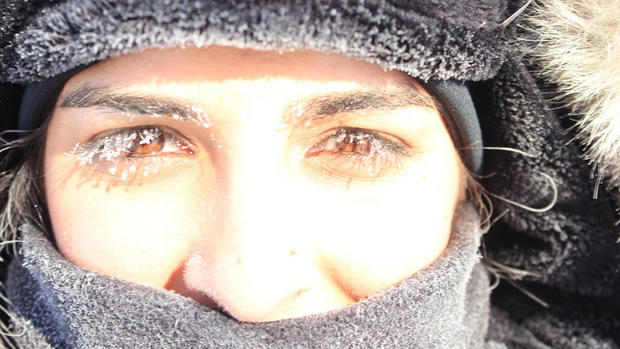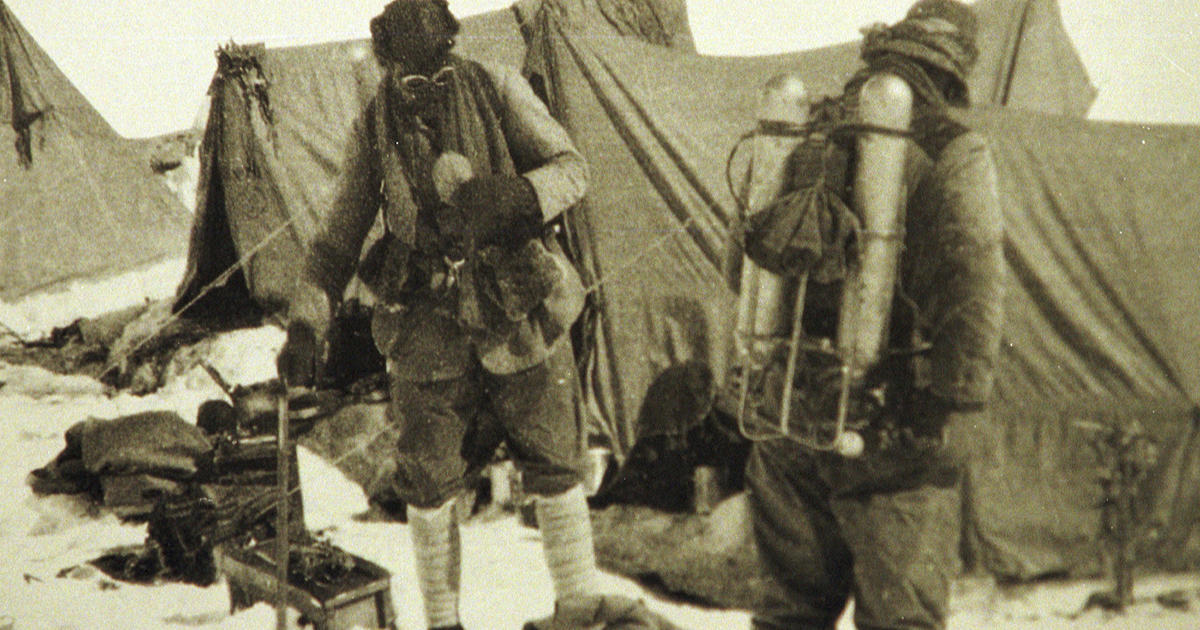60 Minutes in the Arctic: Every shot hurt
When associate producer Ayesha Siddiqi works in the field on assignment for 60 Minutes, she wears headphones to monitor the correspondent's interviews. But now her headphones are frozen and have stopped working.
Producer Rich Bonin wants to map out the best angles for camera shots, but he has to be careful for the constantly and unpredictably fracturing ice beneath his feet. Fall in the water, and he only has minutes to live.
Siddiqi would work quickly to minimize outside time, but she knows if she moves too fast, she will start to sweat, and that's even worse, because it will freeze. "Once you sweat, it's over," she tells Overtime. "You'd have to change all of your clothes in order to get your body temperature back."
The 60 Minutes crew found uncommon challenges at the top of the globe when they produced this week's piece "The Arctic Frontier." As correspondent Lesley Stahl reports, navigable routes will open in the Arctic Ocean once enough sea ice melts, so sailors, scientists and engineers are currently trying to figure out how to survive the hostile environment. How bad are the conditions? Negative 24 degrees, with a wind blowing at 20 miles an hour. That's according to cameraman Blake Hottle in the clip above. He spoke with Bonin shortly after shooting the piece and explained why the task was so difficult.
Because the buttons on his camera are small, they required more dexterity than he could perform while wearing his Icelandic wool gloves. So any time he needed to zoom, to focus, to adjust the aperture—basically, to use the camera—the gloves had to come off. "It sounds melodramatic, but every single shot hurt," he says.
That is, of course, when the cameras actually functioned. Siddiqi says they went through nine cameras on the shoot, as one by one they broke down from the cold. Because frozen batteries drained quickly, the crew had to keep them in heated pouches, and if a camera came inside from the cold, it needed at least an hour for the lens to defrost and clear from condensation.
"Everything that would be so easy, like, oh there's a cool shot, let me grab that! You just can't do it; you can't grab it," Hottle explains. "You can't lower your tripod quickly. You can't change lenses. You can't zoom in evenly. You just can't really operate with your hands bare for more than two minutes."
Bonin empathizes with the feeling that came from being outside with bare hands. "Almost instantly your fingers felt like somebody took a hammer to them and started banging your fingers with a hammer," he says. "It was not cold; it was painful."
Correspondent Lesley Stahl also felt the sting of cold. She has traveled the world on assignment for 60 Minutes and knows challenging locale, but this was different.
"I've been to many places," Stahl tells Overtime. "I was in Saudi Arabia in the desert, where it was blindingly hot. But nothing that hurt as much as this."
In the clip above, she gives viewers a personal tour of the "dorm" she shared with Siddiqi, one of only two other women in the makeshift city on an ice cap.
She points out the bathroom facilities—an outhouse where a toilet seat sits on top of plank of wood over a metal barrel. "You think that seat is cold?" Stahl asks in the clip. "You're right!"
Despite the frozen fingers, toes and toilet seats, Stahl says she found the experience awe-inspiring. A late-night trip to the outhouse meant she was outside to see the bright green glow of the aurora borealis, and in the daytime, the blinding white of ice delighted her.
"Ice is alive; ice moves," Stahl says. "It melts and there's noise—it kind of sings. And it is animate. It is intriguing, but it's also desperately beautiful."
"Human beings are physiologically moved by beauty, and this is the most I've ever been moved."
But in "Sargo," the base camp where Stahl and her crew stayed, people weren't there for beautiful views; they were there to figure out what happens the day ships can navigate through the Arctic Ocean.
"The fate of the new frontier is not yet decided," Bonin says. "It's unfolding as the ice melts and it becomes more navigable and civilian and commercial activity increases. But the U.S. Navy in particular has to prepare for all contingencies. And they're starting to figure that out."
"Ice is alive; ice moves. It melts and there's noise—it kind of sings. And it is animate. It is intriguing, but it's also desperately beautiful." Correspondent Lesley Stahl
The Navy currently conducts submarine warfare exercises every two years in the Arctic, and 60 Minutes was there for one of them. The logistics are astounding—a steel craft the size of a football field needs to find the floating target, then push up through the thick ice to surface. In the clip above, Lesley explains the detailed steps this requires. Sailors drill into the 3-foot-thick slab of ice to drop an underwater telephone, and they carve an X into the ice to mark the target. They then dig out the hatch opening with a chainsaw and pickaxes.
Secretary of the Navy Ray Mabus had been on board for five days and spoke to Stahl about the exercise. "Our responsibilities are increasing as the Arctic ice melts as the climate changes," he tells Stahl in the broadcast piece. "And so the Navy has got to be here. We've got to provide that presence and I hope my presence emphasizes what we do."
Stahl's piece didn't address the "why" of climate change, only what happens after its effects take hold. But 10 years ago, correspondent Scott Pelley reported on the causes of this exact scenario in the 2006 60 Minutes story titled Global Warning! (posted above). In it, Pelley explains that the North Pole will no longer be frozen by the end of this century, and that will have a dramatic impact on the population of polar bears in the north and the strength of storms around the globe.
For now, the Arctic is still a frigid, difficult place for humans to live and work. Even so, the 60 Minutes team was grateful for the chance to experience it. "For all the pain and the challenges of working there, all of that was far outweighed by the beauty and the opportunity to be there," Bonin says. "None of us would refuse a return trip."
The videos above were originally published on October 2, 2016.






